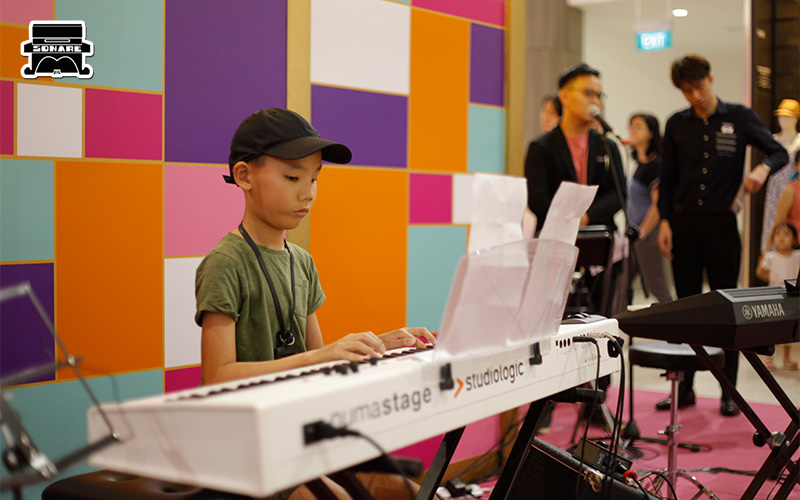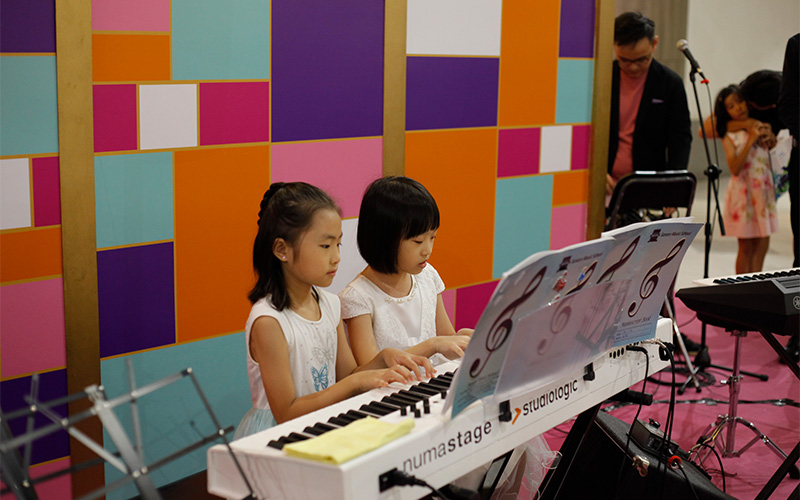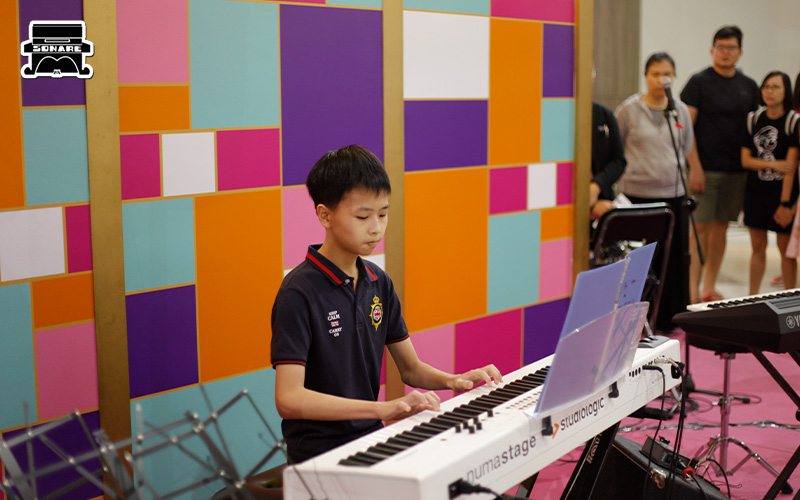Play Music by Ear vs Learning by Note Reading: What’s Best for Aspiring Musicians?
Introduction
In today’s fast-paced world, there are numerous ways to start learning music. For many aspiring musicians, one question often stands out: Is it better to play music by ear or to learn by reading notes? Both paths can open doors to creativity and growth, yet they shape a musician’s journey in very different ways.
Learning to play music by ear encourages curiosity and imagination. It helps students listen closely, recognise patterns, and connect with music in a personal way. This intuitive approach can make learning feel playful and expressive, especially when exploring familiar tunes or improvising.
Reading notes, on the other hand, brings structure and understanding. It builds a foundation in rhythm, theory, and technique, enabling students to accurately interpret music and explore a wide range of styles with confidence.
At Sonare Music School, we believe that note reading is the cornerstone of musical education, giving learners the tools to grow steadily and meaningfully. At the same time, we recognise that ear training plays an essential role in developing musicality and self-expression.
In the sections ahead, we explore how both approaches work together to help students in Singapore become confident, well-rounded musicians.
Key Takeaways:
- Playing music by ear encourages creativity, improvisation, and strong listening skills, helping students connect more instinctively with music.
- Note reading fosters the structure and discipline necessary for long-term musical growth, laying a foundation for theory, performance, and collaboration.
- A balanced approach that combines ear training and note reading allows learners to express themselves freely while maintaining technical accuracy.
- At Sonare Music School, lessons prioritise note reading while nurturing listening and creativity, helping students grow into confident, well-rounded musicians.
Understanding the Two Methods
Every musician learns through a mix of listening, reading, and consistent practice. Among the many ways to begin, two core approaches stand out: playing music by ear and learning through note reading. Each offers unique benefits that shape how a student grows and connects with music.
Playing by ear strengthens intuition, creativity, and active listening, while note reading develops structure, comprehension, and technical accuracy. Together, they form complementary pathways that train different parts of musicianship. By understanding how these methods work, learners can make informed choices that support steady, long-term progress in their musical journey.
What Does It Mean to Play Music by Ear?
To play music by ear means recreating melodies, harmonies, or rhythms by listening and responding, without relying on written notation. It is a skill that develops gradually through repetition, exposure, and sensitivity to sound. Students who learn this way depend on auditory cues, recognising how notes and chords fit together while identifying familiar progressions or patterns.
This approach strengthens listening and memory, allowing learners to internalise musical structure in an intuitive way. It also sparks creativity, giving students the freedom to experiment, adapt, or improvise. For many beginners, especially those drawn to popular or contemporary music, training by ear makes the process feel more spontaneous and expressive. Still, without some understanding of reading or theory, it can be challenging to interpret complex pieces or collaborate effectively with other musicians in formal settings.
What Does Learning by Note Reading Involve?
Learning through note reading focuses on musical literacy and comprehension. Each note, rhythm, and symbol on the staff provides a clear instruction, allowing students to interpret and perform with accuracy. This method builds a deeper awareness of timing, phrasing, and musical structure, which are essential for ensemble work and long-term musical progress.
By developing the ability to read sheet music, students gain access to a vast range of repertoire across genres and eras. They can approach new pieces with confidence, guided by written notation rather than relying solely on memory. For piano note reading in particular, this foundation helps learners coordinate both hands effectively while understanding the interaction between melody and harmony.
At Sonare Music School, note reading forms the cornerstone of musical training. Students are taught not just to follow notes but to understand the meaning behind them, including how rhythm, dynamics, and harmony come together to express emotion and intent. This strong foundation equips every learner with the tools to grow steadily, explore different styles, and communicate through music with confidence.

How Are They Taught in Music Lessons in Singapore?
In music classes in Singapore, teaching approaches vary depending on each school’s philosophy. Some focus primarily on ear-based methods, helping students learn familiar tunes quickly through imitation. Others, like Sonare Music School, emphasise note reading as the foundation of music education while integrating ear training as a complementary skill.
At Sonare, lessons are structured to help students interpret rhythm, pitch, and phrasing directly from written music. This gives them the confidence to explore diverse pieces, from classical compositions to contemporary arrangements. As their reading improves, they also begin to recognise patterns and intervals by ear, creating a natural connection between theory and instinct.
This balanced approach ensures that both creativity and discipline develop together. Students not only learn how to perform accurately but also how to listen, adapt, and express themselves across different musical settings. These are skills that stay with them long after each lesson ends.
The Role of Music Theory Classes in Both Methods
Music theory classes serve as the bridge between note reading and ear training. They explain how music is built, from scales and intervals to chords and rhythm, giving students a clear understanding of the patterns that shape every piece. Theory helps learners connect what they see on the page with what they hear, creating a deeper appreciation for how music works.
For students who read notes, theory strengthens accuracy and comprehension. It helps them interpret markings correctly, predict musical progressions, and perform with greater expression. For those who prefer to play music by ear, theory provides a valuable framework. It allows them to recognise the chords, harmonies, and key changes they naturally pick up through listening.
In both approaches, a strong foundation in theory nurtures confidence and versatility. It empowers learners to explore music with both curiosity and understanding, transforming practice sessions into meaningful moments of discovery and growth. Over time, this balance between knowledge and instinct helps students grow into thoughtful, expressive musicians.

Applying Music Learning in Everyday Life
Music learning reaches far beyond the classroom. It influences the way students listen, express themselves, and connect with the world around them. Whether they play music by ear or learn through note reading, these skills shape not only how they perform but also how they understand and enjoy music in everyday life.
Both approaches offer meaningful experiences that contribute to growth in different ways. Together, they encourage learners to combine creativity with discipline, turning each practice session into an opportunity for discovery, expression, and personal development.
Advantages of Playing Music by Ear
Learning to play music by ear opens a creative and expressive way of making music. Students who develop this skill often grow more confident in improvisation and musical experimentation. They can interpret songs in new ways, explore unique arrangements, and add their own personality to familiar pieces. This freedom encourages individuality and artistic expression, helping each learner to find their unique musical voice.
Playing by ear also makes it easier to learn songs quickly. Students can reproduce melodies and harmonies by listening, without relying on sheet music. This is especially helpful for those interested in pop, jazz, or contemporary genres, where adaptability and spontaneity are key. Over time, regular listening sharpens the ear, improving the ability to identify subtle changes in pitch, tone, and harmony. These skills strengthen musical memory and help players anticipate chord progressions naturally, which is particularly valuable in ensemble or jam settings.
Drawbacks of Solely Relying on Playing by Ear
While the ability to play music by ear brings freedom and creativity, relying on it alone can eventually limit growth. Without knowledge of written notation or music theory, students may find it difficult to describe what they are playing or compose more complex pieces. The absence of theoretical grounding can also make collaboration more challenging, as musical ideas may be difficult to communicate clearly to others.
Group performances and ensemble work require structured timing and coordination, which are usually guided by written scores. Musicians who depend only on listening might struggle to synchronise or follow cues in larger groups. In formal or exam-based environments, the lack of note reading skills can also create barriers when working with peers who are classically trained. Playing by ear remains an important skill, but it is most effective when supported by a strong foundation in theory and notation.

Benefits of Learning Chords by Note Reading
Learning chords through note reading builds the structure and theoretical understanding needed for steady, long-term musical progress. This method teaches students how chords are formed, how progressions work, and how musical elements connect. It helps learners recognise familiar patterns across different keys and styles, giving them the foundation to explore a wide variety of repertoire with confidence.
Note reading also offers a clear and measurable learning pathway. In formal classes in Singapore, systems such as ABRSM and Trinity exams rely on notation to assess progress and mastery. Students who can read fluently gain opportunities to achieve certifications, which enhance their confidence and recognise their growth.
Reading music supports sight-reading, accompaniment, and ensemble playing as well. These skills enable students to participate in orchestras, school bands, or group performances where timing and teamwork are essential. For piano learners, reading notes strengthens coordination and interpretation skills, laying the groundwork for expressive and technically accurate playing. Whether students take piano lessons for beginners or choose to learn how to play the guitar, a strong foundation in note reading helps them approach new pieces with ease and understanding.
Finding the Balance: Why Note Reading Remains Central
A well-rounded musician benefits from both approaches. Playing music by ear nurtures creativity, builds intuition, and boosts confidence, while note reading develops structure, comprehension, and long-term mastery. Together, they create musicians who can perform with both freedom and accuracy.
At Sonare Music School, note reading remains at the heart of every lesson. This structured foundation helps students understand rhythm, pitch, and harmony before moving into creative expression. Ear training complements this process, allowing learners to connect what they hear with what they read. By keeping note reading central while recognising the value of being able to play music by ear, students become versatile, confident musicians who can perform, improvise, and communicate fluently in any musical setting.

Questions You Might Have
1. Is it possible to learn to play music by ear if I have no prior experience?
Yes, absolutely. Anyone can learn to play music by ear with the proper guidance and consistent practice. Ear training helps beginners recognise melodies, rhythms, and chord progressions through careful listening. At Sonare, this is introduced gradually through structured exercises that develop musical awareness alongside confidence.
2. Which method is better for young children?
For younger learners, note reading is often the more effective starting point. It fosters a sense of structure, discipline, and an understanding of musical language from the outset. Children who learn to read music notes gain the ability to accurately interpret rhythm and pitch, which supports long-term progress. Once this foundation is established, fun ear-based games and activities can be introduced to strengthen listening and creativity in a playful way.
3. Do I need to read music to play by ear?
No. Playing music by ear does not require reading notation, since it relies on listening and imitation. However, being able to read notes enhances your flexibility as a musician. When you combine both skills, you can learn faster, explore different genres, and understand how songs are structured. This makes the learning experience richer and more complete, especially for those enrolled in formal classes in Singapore.
4. Can playing music by ear help with improvisation?
Yes, definitely. Playing music by ear develops musical intuition and encourages spontaneity, both of which are the key to improvisation. It helps you listen more actively and respond creatively to what you hear. When paired with note-reading and theory knowledge, improvisation becomes even more expressive and accurate, as you can understand the chords and scales behind what you are playing.
5. What’s the best instrument to start with for either method?
The piano is one of the best instruments for both note reading and ear training. Its layout makes it easier to visualise musical concepts like melody, harmony, and rhythm. Beginners who start with the piano can quickly see how notes relate to sound, which supports both intuitive playing and structured learning. Over time, these skills can also be transferred to other instruments such as guitar, violin, or voice, depending on the student’s interests.

Conclusion
Choosing between playing music by ear and learning by note reading does not have to be an either-or decision. Both approaches play an important role in a musician’s development. Ear-based learning encourages intuition, active listening, and creativity, while note reading provides structure, accuracy, and a lasting understanding of musical language. The most rewarding progress often occurs when these skills complement each other, enabling students to perform with both confidence and expression.
In Singapore’s vibrant music education landscape, the most effective lessons are those that strike a balance between theory, practice, and exploration. Students thrive when guided by a structured curriculum that teaches them to read, interpret, and understand music, while still giving them room to enjoy the spontaneity and joy of playing.
At Sonare Music School, every student builds a strong foundation in note reading that supports long-term growth across instruments and genres. At the same time, lessons encourage improvisation, composition, and creative exploration to keep learning inspiring and relevant. Each class nurtures both technical skill and personal expression, helping students grow into confident, independent musicians.
No matter your starting point, the most meaningful part of learning music is to keep listening, growing, and enjoying every note along the way.
Ready to begin? Join a trial class today and experience how structured, engaging, and enjoyable music learning can be.

